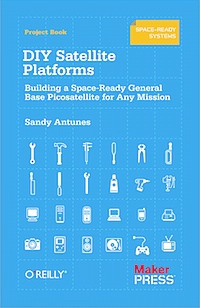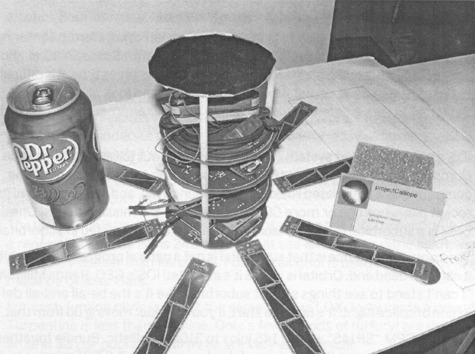2512:
Usually when I speculate about the future, I stick to two areas; either the really near future (within the next couple of decades), or the really far future (so far out that signs of continental drift should be glaringly obvious). But what about the medium term?
Parameters: I'm going to assume no alien invasions or total collapses of technological civilization or significant asteroid impacts, because all three of these are rare in the historical record.
I'm also going to ignore space colonization, because I want to focus on
this planet.
I'm going to assume that we are sufficiently short-sighted and stupid that we keep burning fossil fuels. We're going to add at least 1000 GT of fossil carbon to the atmosphere, and while I don't expect us to binge all the way through the remaining 4000 GT of accessible reserves, we may get through another 1000 GT. So the climate is going to be rather ... different.
Sea levels will have risen by at least one, and possibly more than ten metres worldwide. Large chunks of sub-Saharan Africa, China, India, Brazil, and the US midwest and south are going to be uninhabitably hot — that is, too hot for non-GM plants and organisms to survive in during heat spikes, and with heat spikes over 44 celsius at night lasting at least two weeks every year (sufficient to kill off anyone without air conditioning). As 80% of today's human population live within 200Km of a coast, there will have been mass migrations and resettlements: many of today's great cities will be lost. London, New York, Amsterdam, Tokyo, Mumbai — they're all going to be submerged, or protected by heroic water defenses and at comparable risk to today's Venice and New Orleans (both of which will be long-since lost).
Energy and technology: I think there's a high probability (approaching certainty) that we'll be running on a de-carbonized energy cycle by then. Fusion: will be in widespread use, or proven to be economically non-viable. Fission: will be in widespread
safe use or completely taboo. Solar, wind, tidal, OTEC: mature technologies, durable and optimally deployed for hundreds of years. The more variable environmental power sources will be used to generate hydrogen, and from there via Fischer-Tropsch synthesis to produce storable hydrocarbons from water and air: or they'll be used to compress air into exhausted underground gas deposits, to be released slowly for energy balancing. More likely, we'll have either "wet" nanotechnology — advanced biotech, in effect — giving us highly efficient algae-analogs that can continue to photosynthesize in the high temperature zones and produce useful energy-storing materials. Or we'll have full-on Drexlerian diamond/vacuum phase nanotechnology and paving the Sahara in self-organizing and self-wiring solar cell factories will be a high school project.
Political/demographic change ...
Five hundred years is a nearly unimaginable gulf from today's perspective. Five centuries ago, the Portuguese conquistadores were beginning their rampage through South America; Martin Luther was finishing his doctorate in theology and thinking about sin: the huge sequence of civil wars that racked Japan for over a century were raging: the Great Powers were still the Chinese empire and the Caliphate (although the latter was undergoing a shift in center of gravity towards Istanbul and the Ottoman empire). The great powers in Europe were Spain and Venice; the English speaking world was a few million barbarians occupying a handful of damp islands on the outer fringes of Europe. It's more than twice the historical existence of the USA to this date. Of our social institutions, very few survive from that long ago: the Catholic Church (and various orders and sub-groups within it), the Japanese Monarchy, and so on. A handful of universities, banks, and other institutions. The half-life of a public corporation today is about 30 years: ten half-lives out — 300 years hence — we may expect only one in a million to survive.
Looking forward 500 years requires us to make some assumptions. In the absence of breakthroughs in artificial intelligence, mind uploading, or longevity research (which it would be foolhardy to dismiss on this kind of timescale) none of us are going to be around in any form to observe it. We appear to be living close to the peak of a demographic bubble that will see our population max out or be in decline by 2100. Longevity breakthroughs (as in: a cure for the aging process, and all diseases that currently prevent us from reaching our maximum age) might smear out the descent, but unless old people suddenly start to have more children, it's not going to change it. Longevity breakthroughs
would slow down the rate of change of demographic groups, but only in the medium term. 500 years is close to the human mean life expectancy if all medical causes of death are abolished: eventually an accident or violence will get you. So, demographically, the world of 2512 isn't going to resemble our world very closely at all, although it's anyone's guess at this stage as to who will prosper.
(It's fairly obvious at this point that some idiot is going to start shrieking about the teeming, breeding hordes of [people not like them]. It's also likely that we'll find a bigot or two in the comments, nattering about "Eurabia" or sha'ria law. I'd just like to point out that 500 years ago
our ancestors mostly believed in the geocentric model of the universe, and witchcraft, and torturing heretics. We're descended from people who were arguably rather less enlightened than the Taliban in Afghanistan. 500 years is a
long time, and today's ignorant fanatics are tomorrow's effete decadent intellectuals. And vice versa.)
One key issue is that during the age of cheap oil (i.e. right now) a whole lot of cultural mixing is going on, on an unprecedented, planetary scale. We have become an urban species, and I see no high probability of that state changing and the bulk of humanity reverting to a low-density agricultural (much less hunter-gatherer) lifestyle. Over the next century we're going to be doing a lot more cultural remixing; many niche languages are becoming endangered while 3-5 major languages are becoming global lingua francas — English, Mandarin Chinese, Arabic (although Arabic is balkanized), Spanish, Portuguese. Whatever culture looks like in 2512, it's unlikely to be broken up and diversified geographically (except in practical terms — igloos don't belong in central Africa, and so on), although there may be many subcultures distributed in balkanized linguistic and informational bubbles.
The age of the Westphalian nation state is ... well, it's less than 500 years old. And that model comes with huge contradictions and paradoxes if you consider the extent of travel and communication today. A model that evolved to handle territorial boundaries in an age when it took two days to cover 100Km is bizarrely inappropriate in an age when it takes two days to span the antipodes (which at that time were about 2-3 years apart — if you survived the adventure).
I'd like to believe in
Steven Pinker's pacification hypothesis — that the history of humanity shows a continual progression towards peaceful means of social mediation, and a decline in violence, because we are developing better tools for dispute resolution and selecting at an individual and cultural level for less-violent people and belief systems. But even if he's right in the long term, there are regressions along the way. The 20th century was the most peaceful century in human history, in terms of probability of an individual dying violently (either in war or through murder): but it still sucked mightily if you were a conscript during the Battle of the Somme, or a Jew in a ghetto the SS had just cordoned off.
I suspect the hypothetical no-collapse-of-civilization world of 2512 will harbor a myriad of conflicts, but they'll be played out in ways incomprehensible or invisible to us. We're already living into an age when developed nations prefer to send drones instead of human soldiers where possible: and where information war is an actual thing, not just a bullshit marketing proposition. Go forward 500 years and extrapolate from today's Predator drone, analogizing it to a 1500s arquebus ... it's not pretty.
Speaking of regressions: racism and race politics as they exist today are largely a side-effect of the perceived need to find a moral basis from which to defend the African slave trade, followed by rationalisms based on a half-assed reading of evolution. Older strains of racism and intolerance hinge on religious absolutism. Sexism emerges from the defense of patriarchal status. I see none of these constructs as inevitable, and the status of women in particular is drastically affected by the
demographic transition phenomenon, which seems in turn to be a side-effect of improved maternal childbirth survival rates and improved neonatal survival. Which is to say that, short of a complete collapse of civilization and the loss of key knowledge about hygiene, feminism (in the sense of, at a minimum, the end of patriarchy and the systematic subjugation of women as a class by men as a class) may be as much of a one-way shift as the transition from hunter-gatherer to settled agricultural lifestyles at the beginning of the
neolithic.
The biosphere on 2512 Earth isn't going to look much like ours. That we're living through a great extinction event is obvious, and the level of climate change we can expect in five centuries means this will have run mostly to completion. On the other hand, it's almost a certainty that if we're still around in five centuries, we'll have extensive experience in
synthetic biology, and not just at the single-celled level. Tools we're going to need include a better photosynthesis pathway (one that operates efficiently above 40 celsius, rather than shutting down), a more efficient mitochondrion, modified ribosomes that can assemble polypeptides using non-standard aminoacids (presumably coded for using four-base codons),
lots of new and improved heat shock proteins, and some metaprogramming systems for handling epigenetic modification and cellular differentiation.
I'd expect to see lots of — to our eyes — odd vegetation. Freeman Dyson's suggestion of GM mangroves that can grow in salinated intertidal zones and synthesize gasoline, shipping it out via their root networks, is one option. Variant food crops that can grow in 50 celsius climates and still make stuff we can eat would be a bonus. Modified animal or bird pest species, re-purposed as agricultural stoop labour? It might be easier to work with the intelligences that nature's dropped all around us rather than trying to design artificial ones from scratch. (Think racoons. Think racoons programmed to come out at night to harvest and wash fruit because we've invented racoon Heroin™ and trained them to take their fix in payment for crop-picking. Or something like that.)
I'm unsure whether the non-urban environment is going to be curated,
re-wilded wilderness. Or whether it's going to resemble a vast, robotized, semi-sentient farm, with every individual plant tagged with an RFID chip to monitor its growth and coordinate its nurture. But either way, it's going to look rather alien to our eyes.
Other neck-sticking-out projections?
I doubt the United States of America will exist in 2512. I doubt the United Kingdom of Great Britain and Northern Ireland will exist in 2512. I doubt that the Peoples Republic of China will exist in 2512. (The Japanese monarchy ... maybe, if they haven't been inundated.) Our existing geopolitical boundaries are going to take a shoeing from rising sea levels and changing demographics. And our existing political arbitration mechanisms are already taking a shoeing from communication and data mining technologies. The legal, economic, and cultural frameworks of 2512 are going to be rather different, as are the dominant sociopolitical groups. Possibly South Africa (or some political grouping in that part of the continent) will be the dominant superpower. Or maybe it'll be Poland.
I don't expect off-planet trade to amount to much. There may be useful accessible sources of rare earth elements. And there may be bulk platinum or iron deposits on small asteroids that we can dump in the ocean without causing too much harm. But there's a hard floor under the energy cost of getting a canned ape into orbit — namely the mass constraint imposed by canned ape plus life support, and the reaction mass and energy needed to shove it up to around 7.5km/s — and we really don't want to be using excessively high energy power sources in a biosphere we have to live in. Even if we iron out the bugs in our space elevator designs, and work around the obstacles, a ticket into orbit isn't going to be significantly cheaper than a first-class subsonic airliner ticket to the opposite side of the planet, today. Which is cheap enough for emigration, but not necessarily for bulk trade: we might be exporting brains and importing insanely high-grade permanent magnets, but we won't be exporting water and importing corn.
Anyway, that's my blogging keystroke quota exceeded (I have a novel to write). Over to you ...




!['Detector! What would the Bayesian statistician say if I asked him whether the--' [roll] 'I AM A NEUTRINO DETECTOR, NOT A LABYRINTH GUARD. SERIOUSLY, DID YOUR BRAIN FALL OUT?' [roll] '... yes.' 'Detector! What would the Bayesian statistician say if I asked him whether the--' [roll] 'I AM A NEUTRINO DETECTOR, NOT A LABYRINTH GUARD. SERIOUSLY, DID YOUR BRAIN FALL OUT?' [roll] '... yes.'](http://imgs.xkcd.com/comics/frequentists_vs_bayesians.png)






